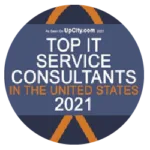
One of the biggest challenges leaders face in their personal and professional development is identifying blind spots, the unseen obstacles that hold them back from achieving their full potential.
Unfortunately, many leaders don’t take the time to find out if they have blind spots. Research by Zenger Folkman found that 30% of leaders had at least one major flaw that they did not know about.
Finding and fixing blind spots isn’t for the faint of heart. It takes a lot of effort, courage, and discipline to identify them and course-correct. But going through the process will help you and your business to keep moving forward.
Here are four tips to guide you.
Conduct a self-assessment and categorize your known strengths and weaknesses. Block out time on your calendar and don’t allow interruptions. Force yourself to answer tough questions about your abilities and limitations.
Then write down the answers so you have a better understanding of where you are succeeding, where you are falling short, and what steps you need to take to improve.
The inventory you create during the self-assessment will be incredibly helpful when you compare it to information collected from other sources.
Standardized personality tests are another tool to help uncover blind spots.
Wiley’s DiSC and the Myers-Briggs Type Indicator are two popular tests that provide insight into your leadership style. Most of these assessments are based on the “Big 5” personality traits: agreeableness, conscientiousness, extroversion, neuroticism, and openness.
When compared to your own self-assessment, the tests can shed more light on your tendencies and preferences in communication, decision-making, and problem-solving.
This is where the process gets tough, but it’s also the most important step to take.
Ask several members of your team and peers to list your strengths, weaknesses, and blind spots.
Ask them to recommend ways that you can improve.
If you are unsure that team members and peers will share their true feelings for fear of looking critical, then use online tools like Google Sheets or Survey Monkey to obtain anonymous feedback.
The most effective personal and professional development initiatives have a written plan that includes the information collected in the previous steps and identifies tasks to be completed and milestones to be achieved.
It’s your blueprint for success and will keep you on track to achieve your goals.
Make sure every goal is SMART (specific, measurable, attainable, relevant and timebound) and that tasks and milestones are reviewed on a weekly, monthly and quarterly basis so you can quantify your progress.









